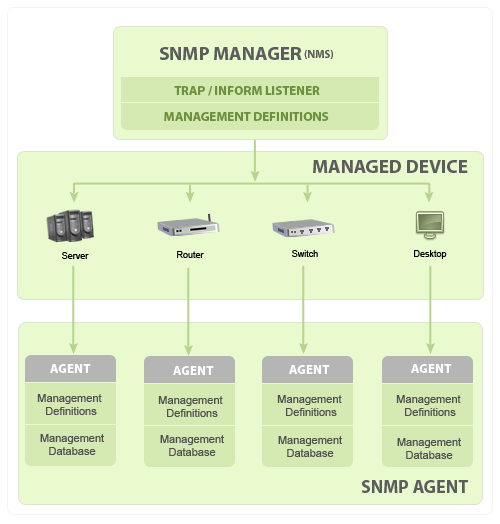What is SNMP?
SNMP stands for Simple Network Management Protocol. It is a widely used protocol for monitoring and managing devices on a network. SNMP uses a client-server architecture, with a central management station (NMS) that polls devices for information and receives notifications from them when events occur.
SNMP Features
SNMP offers a number of features that make it a valuable tool for network management, including:
- Scalability: SNMP is designed to be scalable to large networks. It can be used to monitor thousands of devices simultaneously.
- Ease of use: SNMP is relatively easy to use and configure. It does not require any special knowledge of networking to get started.
- Security: SNMP can be configured to use a variety of security mechanisms, including authentication, authorization, and encryption.
SNMP Applications
SNMP is used for a variety of network management tasks, including:
- Device discovery: SNMP can be used to discover devices on a network. This information can be used to build a network inventory.
- Health monitoring: SNMP can be used to monitor the health of devices on a network. This information can be used to identify potential problems before they cause outages.
- Performance monitoring: SNMP can be used to monitor the performance of devices on a network. This information can be used to identify bottlenecks and optimize network performance.
- Event notification: SNMP can be used to receive notifications when events occur on devices on a network. This information can be used to quickly identify and respond to problems.
SNMP Security
SNMP is a relatively secure protocol, but it is important to take steps to protect your network from attack. Some of the things you can do to improve the security of your SNMP implementation include:
- Use strong passwords: SNMP uses community strings to authenticate devices. Make sure to use strong passwords that are difficult to guess.
- Restrict access: You can restrict access to SNMP on a per-device basis. This will help to prevent unauthorized users from accessing your network devices.
- Use encryption: You can encrypt SNMP traffic to protect it from eavesdropping.




No comments:
Post a Comment